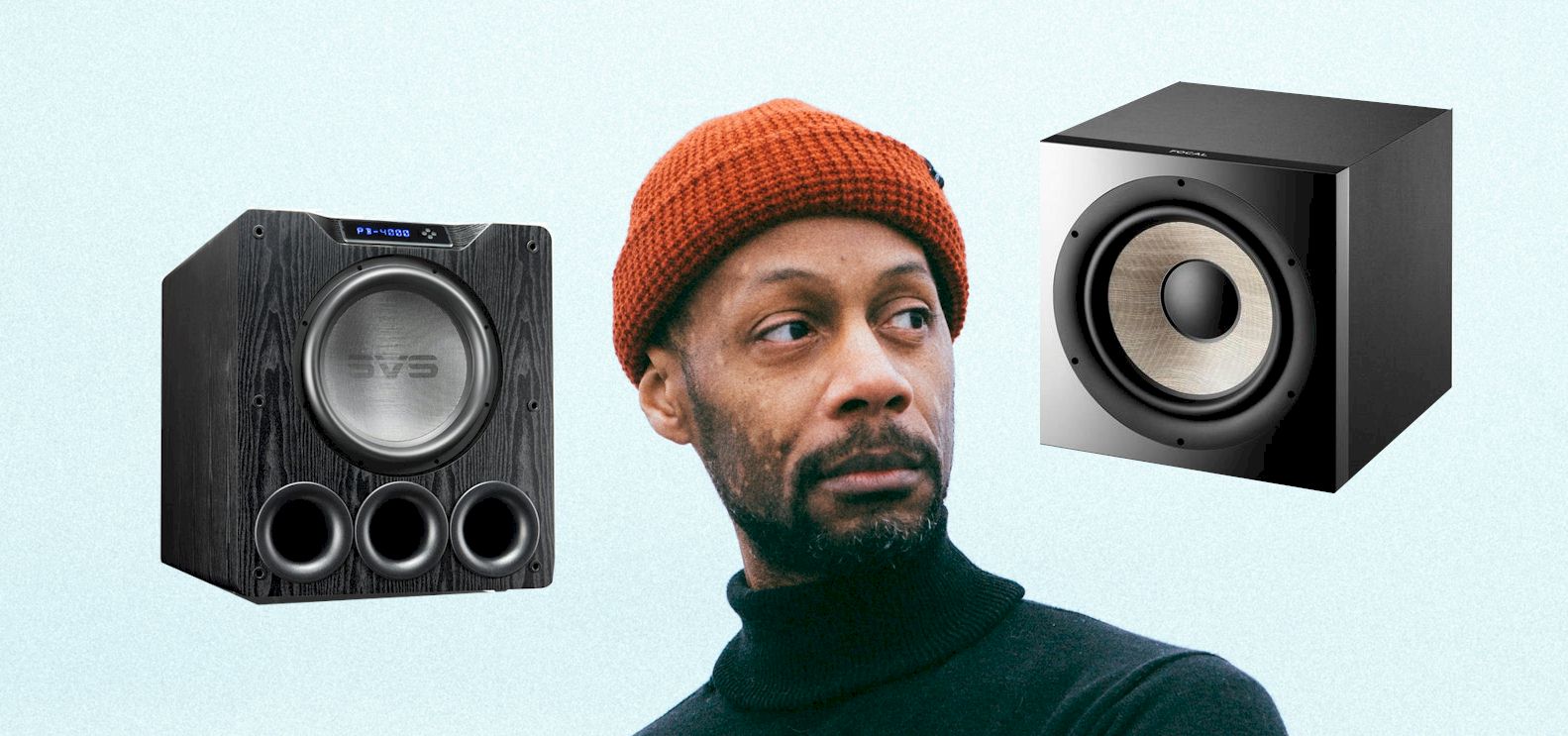Ported vs. Sealed subwoofer arguments represent a friendly banter between two different schools of thought in bass delivery. Subwoofer customers are constantly at odds over whether bass outputs should be "tight" or "boomy."
Ultimately, the choice you make depends on your tastes and the style of music you'll be playing.
But how do these two popular yet polarizing options compare?
Read on as we comb through the physics and aesthetics of these two subwoofers. Who's with me?
Contents
What are ported subwoofers and sealed subwoofers?
Ported subwoofers
Without sounding too technical, ported subwoofers give off a deeper bass sound. They have ports (vents or bass reflexes) in the box created to amplify low-bass response, much like the sound effect you create when you blow air over the mouth of a bottle. This vent redirects the sound from the backside of the cone, adding it to the sound emanating from the front of the sub, thus creating a louder, room-filling, more vibey bass.
Hard-driving music genres like rap and rock are better suited for a ported sub than a comparable sealed sub.
Sealed subwoofers
Sealed subwoofers are all about precision delivery. Essentially, sealed subs are airtight boxes that give off a more articulate bass. What you will hear is a flat response (not outrageously bombastic) instead of reverberating bass sustainment.
Scientifically speaking (it's necessary, sorry), the sealed air in the box behaves like a shock absorber, smoothing out the sub's cone oscillatory motion through moderation so that all notes are rendered. In simple terms, don't expect a sealed subwoofer to roar, rumble, or boom obscenely.
The reason for this is a flat frequency response design that generates a tighter bass and a low-freq underlay for your tunes. As you can envisage, they are more compact than ported subwoofers, and more vehicles can accommodate them. Also, sealed subs display impressive power handling.
Related: How to build a subwoofer box to specifications
Ported subwoofers vs. sealed subwoofers: the differences between them
Size
Deepened bass extension from a ported speaker means a large enclosure over the comparable sealed box subwoofer. For those who love to shake out their living room in the morning hours, behold your ported your redemption!
Contrariwise, a sealed subwoofer is smaller in size as the sealed air lets the subwoofer have more control, thanks to shock-absorbing properties. Music play is tighter with low group delay (i.e., better-blended tunes) - a delight for audiophiles.
A sealed subwoofer would need greater input power to make up for the size disadvantage over a ported sub.
Related: Speaker Wire For A Subwoofer
Power
Even at low wattage, a ported box is very efficient, releasing a chest-thumping sound. Low power input also means you don't need to worry about cooling your system. We can't quite say the same for a sealed sub. A sub in a sealed enclosure will generate a crisp sound and draw more power to emit a roaring bass. To develop a similar volume in a relatively ported enclosure, most users will set up more powered subwoofer units.
Purpose
When purchasing a subwoofer, consider whether it will be used for home entertainment, automobile cruising, or music appraisal.
If you're considering using your subwoofer as part of a home audio arrangement, ported sub boxes are the way to go. Thrilling, dynamic vibrations from highly bassy sounds will make any horror or action film memorable.
For producers and sworn audiophiles with a critical outlook on sound, sealed subs deliver instrumental bass articulately.
Room size and positioning
Square footage is an important part of subwoofer selection. Bass intensity requirement is directly proportional to the size of the room. What I mean by that is that the bigger the room, the more bass needed for saturation. That said, sealed box subs are not ideal for roomy areas. They are better suited to small rooms.
Ported subs are the toast of large rooms. I was drowning them out with seismic sounds. Expect to see them often in home theaters.
An intelligent position for a ported sub is in front of the listener to hear and absorb shockwaves.
Visual impression
Putting a ported and a sealed with the same driver cone side by side, anyone would agree that sealed subwoofers have more compactness, blending into the listening area with its cube-esque design, less visibility, and floor occupation. On the other hand, the additional cabinet of a boomer bass is more conspicuous and leaves a larger space footprint.
Related: How to connect a subwoofer to an old amplifier
When to choose a ported subwoofer over a sealed subwoofer
Go for a ported subwoofer over a sealed subwoofer when:
- You are looking to get more bang for your buck, literally. Hard-driving sounds are reinforced using a ported mechanism without the need for any auxiliary processor or equalizer.
- The idea of creating ground-shaking sound to impress your friends or make your neighbors green with envy makes absolute sense.
- A low-maintenance subwoofer that can stand the test of time meets your requirements. With a small current, ported subs can still bring those low frequencies to life.
When to choose a sealed subwoofer over a ported subwoofer
Consider a sealed subwoofer over a ported subwoofer when:
- You demand more efficient delivery. Closed subwoofers are smaller and are airtight, ensuring making sound quality richer. The super transient response gives a more integrated sound.
- Experiencing distortions in the music you listen to is unforgivable. Ported subs can warp the acoustics of certain types of music; closed subs don't.
- You are looking to own a rugged sub. Their sealed nature preserves integrity amidst weather elements such as temperature and humidity.
- The longevity of your speaker is your goal. A closed sealed subwoofer is a device that's less susceptible to driver fatigue as opposed. Bass reflex, however, is prone to mechanical damage due to higher back and forth air pressure.
- An easy-to-design system works for you. Let's say you ordered a ported sub; it may take more time to get to your door than a sealed sub. Why? Ported subs are more complex to design due to the high pressure they are expected to support.
Related: Review of the subwoofer under 500
FAQ
Which is better: a sealed or ported speaker?
A sealed speaker is considered more musically correct than a ported speaker. They are also easier to construct and are smaller in size. A higher transitory response implies that a closed subwoofer will respond faster to a sudden swing in frequency.
Ported involves tuning an encasement to a particular frequency using a port or vent. They are harder to design because they are larger. Vented cabinets give rise to an extended bass effect, which manifests in a rumbling, deeper bass. The transitory response is slower compared to sealed subs, implying a dip in sound accuracy. However, bass reflexes can generate a bass tone even at low power.
All in all, the better speaker depends on what you aim to achieve with either design. If you are a strict acoustic adherent, go with a closed speaker and take efficient sound transitioning seriously. Opt for a bass reflex if you're into hip-hop or EDM and want to hear raving bass from your playlist.
Are sealed subwoofers good for movies?
Plenty of people use sealed subs for movies, while others use ported subs for music.
Generally, a sealed enclosure will work fine for movies but with ½ or ¼ of the performance of a ported enclosure. Sealed can only have a more articulate bass than rumbly ported bass.
Ironically, negative stereotypes you hear about sealed are quashed when you watch movies with products like SVS and HSU. Major considerations for watching movies with a closed subwoofer include how large your room is and how much bass output (sound pressure level) you require.
Does sealed or ported hit harder?
Certainly, a ported subwoofer will hit harder and louder than a sealed subwoofer of comparable size without assistance from an EQ or processor. The reason is: the cone driver has more motion range in a ported box.
A sealed box can be made to sound louder through Polyfilling - a procedure that requires filling the box with Polyfill to slow down air for a deepened bass sound.
Can a sealed box be ported?
Yes. A sealed subwoofer can be ported. First, drill a hole in the box. Then, you will have to calculate the net cubic air space, i.e., space remaining after the subwoofer is placed. Finally, calculate the frequency at which you want to port. This might be hard to achieve on your own. You might want to visit a qualified sound engineer for guidance.
Wrapping up
Whew! Our Ported vs. Sealed subwoofer roundup was pretty exhaustive. Now that we know fundamental discrepancies between a sealed subwoofer and a ported subwoofer, you can now make better purchasing decisions based on your lifestyle goals.
In a nutshell, a sealed sub is shut tight so that no air seeps out of the enclosure resulting in the cleaner bass passage. However, a holey ported sub emphasizes or stretches bass up to 4 times more than sealed subs. In one demonstration, 10 dB was added to the ported speaker.
HI, John Andrew here. I’ve been an audiophile since I was a little kid. I’m an original member of myaudiolover . It emerged as a way for me to share my passion and knowledge for audio technology. If you’re looking for tips, techniques, and insights about audio-tech, that can enable your productions that professional edge, then MyAudioLover is the place for you!

